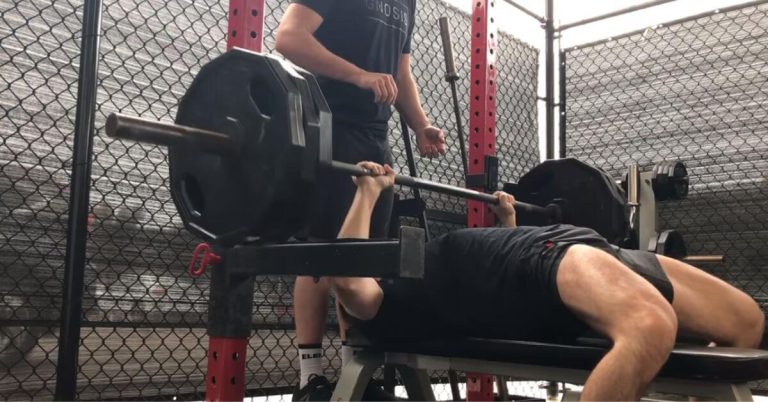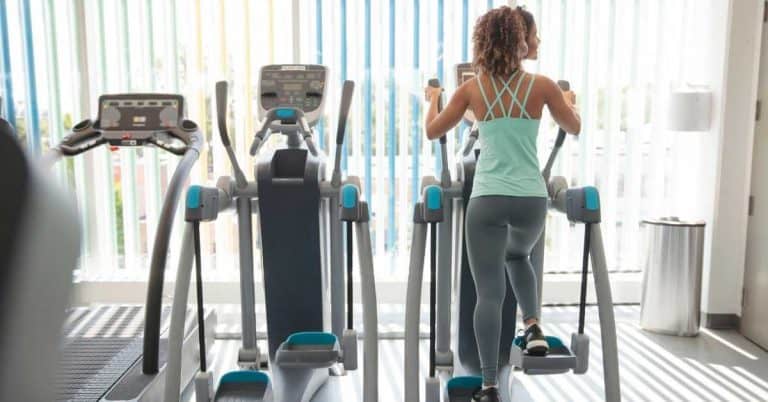How to Flex Your Traps: Master the Muscle with These Techniques!
Last Updated on January 3, 2024 by Justin Harris
How To flex your traps, stand facing a wall with your arms at right angles out in front of you. Keeping your shoulder blades back and aligned with the wall, gently squeeze together the muscles in this area and raise both arms upwards.

Additionally, you can perform exercises to stretch and strengthen your traps, such as bending your head to touch your ear to your shoulder or lying on your back and lifting your shoulders off the floor to flex your traps. Remember to maintain an upright posture throughout the exercise and flex your shoulder blades back and down towards your lower back for proper form.
Be sure to consult with a fitness professional for personalized guidance.
Why Flexing Your Traps Is Important
Flexing your traps is an essential component of building a strong and well-developed physique. Strong traps not only enhance your overall appearance but also contribute to better posture and improved performance in various activities. One of the benefits of having well-developed traps is that it helps support and stabilize your shoulders, preventing injuries and promoting better shoulder mobility.
Additionally, flexing your traps can create the illusion of a wider and more muscular upper body. It adds definition to your back, giving you a more aesthetic appearance. Proper form and posture are crucial when flexing your traps. Maintain an upright posture, flex your shoulder blades back and down, and engage the muscles in this area. You can incorporate exercises like shrugs and upright rows to strengthen and develop your traps further.
Correct Form For Flexing Your Traps
When flexing your traps, it’s important to maintain an upright posture, with your shoulder blades flexed back and down. This will ensure proper form and effectiveness of the exercise.
Proper body alignment and posture |
|---|
| When flexing your traps, it’s important to maintain proper body alignment and posture. This ensures that you engage the shoulder blades and upper back muscles correctly for maximum effectiveness. |
|
To achieve proper body alignment, stand facing a wall with your arms at right angles out in front. Ensure that your thumb is facing away from the wall and your forearms are aligned with the wall. Keep your shoulder blades back and gently squeeze together the muscles in this area. |
| When flexing your traps, slowly raise both arms upwards while maintaining the engagement of your shoulder blades and upper back muscles. This exercise helps to strengthen and define your traps. |
|
If you notice that one of your traps is tighter than the other, a simple stretch can help fix this imbalance. Just bend your head like you’re trying to touch your ear to your shoulder. Hold this position for a few seconds, then switch sides. |
| Remember to maintain an upright posture while flexing your traps. By keeping everything tight and aligned, you can effectively target and engage the muscles in your traps for impressive results. |
Techniques For Flexing Your Traps
Isometric exercises to strengthen and activate your traps: One effective way to strengthen and activate your traps is through isometric exercises. Isometric exercises involve holding a specific position without any movement. For example, you can stand facing a wall with your arms at right angles out in front. Keep your shoulder blades back and gently squeeze together the muscles in this area. Another option is to perform a shoulder shrug exercise, where you raise your shoulders towards your ears and hold the position for a few seconds. Isometric exercises help to engage and strengthen the trap muscles.
Dynamic exercises to increase trap size and definition: In addition to isometric exercises, there are dynamic exercises that can help increase trap size and definition. Some common exercises include dumbbell shrugs, upright rows, and bent-over rows. These exercises target the traps specifically and can be performed using different variations, such as using dumbbells or a barbell. Remember to focus on proper form and technique to maximize the effectiveness of these exercises. Consistent training and progressive overload are key factors in developing bigger and more defined trap muscles.
Overall, incorporating both isometric and dynamic exercises into your workout routine can help you flex your traps effectively and enhance their strength and appearance.
Integrating Trap Flexing Into Your Workout Routine
Incorporating trap-specific exercises into your training plan can help you develop strong, defined traps. Including exercises such as dumbbell shrugs, barbell upright rows, and farmer’s walks can specifically target your traps and promote muscle growth.
When performing these exercises, it’s important to focus on proper form and technique. Start with lighter weights and gradually increase the intensity as you build strength. Aim for an effective rep range of 8-12 repetitions per set, and complete 3-4 sets of each exercise.
In addition to trap-specific exercises, incorporating compound exercises like deadlifts, rows, and overhead presses into your routine can also engage and strengthen your traps. These exercises target multiple muscle groups, including the traps, allowing for overall muscle development.
Remember to listen to your body and give yourself adequate rest and recovery between workouts. Consistency and progression are key when it comes to achieving optimal trap development.
Read Also,
- Is Jeremy Ethier Good?
- Best Treadmill Under 300
- Is Get Healthy U TV Legit?
- Best Elliptical Under 600
- Best Exercise Bike Under 200
- Best Elliptical for Short Person
- Best Sauna Suit for Weight Loss
- Best Rowing Machine Under 500
- Best Rowing Machine Under 200
- Best Elliptical Machine Under 1000
- Which is Better Hydroxycut Or Dexatrim?
Tips For Maximizing Trap Flexing Results
To maximize your trap flexing results, it’s important to warm up properly and stretch before starting your workout. This helps prevent injuries and allows your muscles to move more efficiently. Incorporating trap flexing with exercises for other muscle groups is also key for achieving a balanced physique.
When performing trap flexing exercises, make sure to maintain an upright posture and keep your shoulders back and down. This helps to activate the traps and engage them fully. Additionally, focus on squeezing and contracting the muscles during each repetition to maximize the effectiveness of the exercise.
Some exercises that target the traps include shrugs, upright rows, and bent-over lateral raises. Remember to start with lighter weights and gradually increase the intensity as you build strength.
In conclusion, by following these tips and incorporating trap flexing into your regular workout routine, you can achieve stronger and more defined trap muscles for a well-rounded physique.
Conclusion
To effectively flex your traps, start by standing facing a wall with your arms at right angles in front of you. Keep your shoulder blades back and gently squeeze together the muscles in that area, then slowly raise your arms upwards.
If you’re experiencing uneven traps, try a simple stretch by bending your head to touch your ear to your shoulder. Maintaining proper form is key, so always maintain an upright posture and flex your shoulder blades back and down during the exercise.
Remember, consistency is key to achieving strong, defined traps. Happy flexing!






